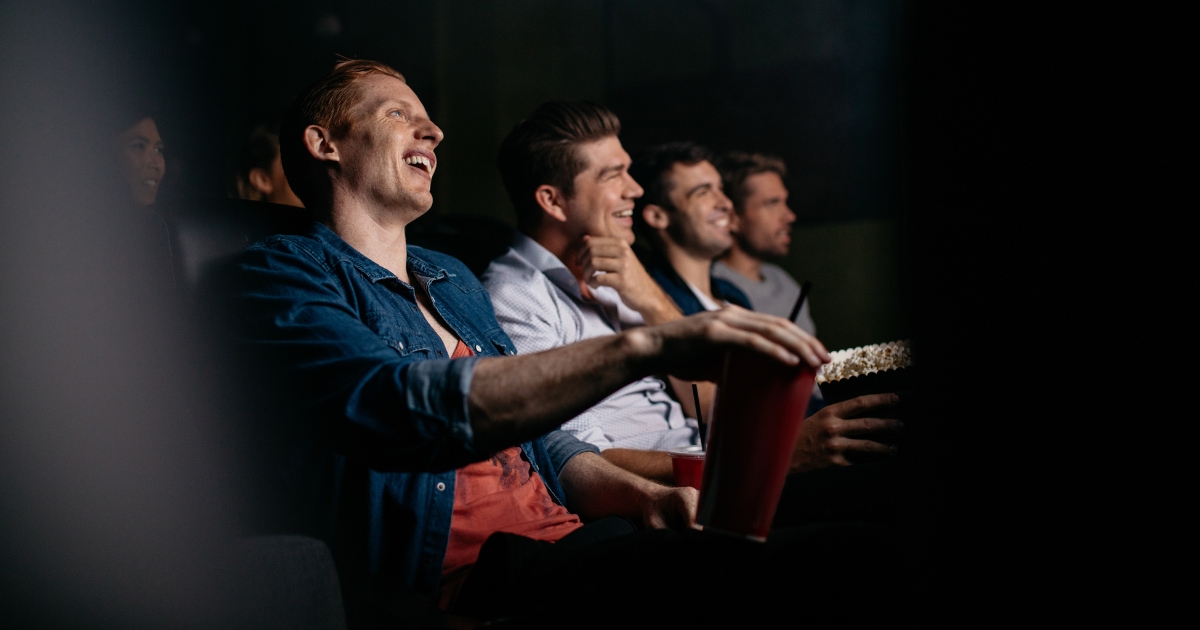Superyacht Music, Movies & TV: The Challenge of Quantity & Quality

We continue to see an increasing amount of options to get music, movies and TV shows into our superyacht audio-visual (AV) systems. Content choice is certainly a good thing. But I believe this to be a pitfall for superyachts. In an industry that prides itself on quality, is the way we are utilising technology leading us in the wrong direction?
The Past
As little as 10 years ago, the media available on board was very different. The primary source was the audio/video on demand system. Usually this would be Kaleidescape, offering original quality titles from the onboard server.
There was satellite TV of course, and possibly still some Blu-Ray discs. Use of optical discs was decreasing but, like today, remained a great option where the highest quality was required.
Content choice was more limited than today, but typically more curated to the owners and guests. However, you could see the focus was providing the best quality experience, in the exquisite interiors. Rightly so.
The Present
Fast forward a few years and things have changed drastically, but in some ways not for the best.
Ashore most of us stream video content daily. And as superyachts follow consumer trends, connectivity allowing, we stream on board now too.
Yet the advent of mass video streaming is very recent. Although Apple and Netflix started video streaming in 2007, the explosion of available services and subscribers was much more recent. Amazon Prime Video launched in 2016. Apple TV+ and Disney+ launched in just 2019.
Did you know? Disney’s streaming services (Disney+, HULU and ESPN+) are reported to already have more subscribers than Netflix!
Such convenient access to more content choice is not a good thing. It is a great thing!
But here’s the catch for superyachts. Even the best 4K streaming services send content of compromised quality compared to equivalent 4K Blu-Ray Discs or Kaleidescape titles.
For the average consumer, using mediocre systems in compromised spaces, it usually doesn’t matter. Most people won’t see or hear the difference. So, streaming services remain effective commercial solutions to provide huge amounts of convenient content to the masses.
But on board superyachts, providing the highest quality content absolutely matters if we’re truly aiming for the best possible experience. Inferior content gets embarrassed by high-end systems in good audio-visual spaces. It is garbage in, garbage out.

I’m not suggesting we should ONLY provide the highest quality options. Sadly, those options are actually very limited. But we really must ensure they are available as an option, especially in onboard spaces best suited to an AV experience.
We need to provide the whole spectrum of streaming services to satisfy demand for quantity and choice. But we must also provide the highest fidelity options to satisfy demand for quality.
Often it isn’t a case of which option to provide on superyachts, but a matter of providing them all!
Compare this to a choice of internet connections. The ideal situation is having ALL the popular connectivity options available. Having Starlink, 4G/5G and VSAT enables you to cover all situations and maintain high service level.
Yet sadly we continue to move towards only providing our multi-million Euro systems with inferior quality streaming media, or compromised ripped content stored on board.
Technical Differences
How streams and original quality content differ is complicated, and worthy of another long technical article. But essentially, streams use additional 'lossy' compression to drastically reduce data size. The cost is audio and video quality reduction that for most people using most systems goes unnoticed.
There are other issues such as low frame rates that can cause side effects such as increased TV processor load. TVs often have to work hard to improve low frame rates. This can result in a number of issues. You may wish to read further on the magic that is 'Motion Interpolation', and its side effects.
Also remember an advertised video resolution rarely guarantees quality. There are many other factors affecting visual quality than the amount of pixels in the video signal.
I’m sure we’ve all watched movies that are 4K or Full HD, but noticed bad quality. The difference is the compression is very high, reducing data, but at the cost of noticeable reduction in quality. This is what we call a “lossy” compression, versus “lossless” compression, which reduces data to a lesser extent without any reduction in quality.
Did You Know? Bel Air Cinema offer private residential and marine “real cinemas". This includes access to movies on their cinema release date, before other platforms, and in the same ultimate cinematic quality. Although the most expensive way to get content, if the best cinema experience is required regardless of cost, why not?

Starlink Won’t Fix This
The current surge in connectivity on board doesn’t mean we’re going to be streaming lossless 4K video, otherwise services would have appeared ashore years ago. It is too much data, with too little consumer demand.
So there certainly is still a place for that onboard server loaded with lossless content.
Discs will also continue to stick around. They survived so far and remain one of the only ways of obtaining the best content. Whereas most rooms no longer have dedicated disc players, there should still be one available as a central source for the vessel. Certainly, however, they should still exist locally in crucial audio-visual spaces such as the main lounge or cinema.
Did you Know? Kaleidescape runs a Marine Movie Service, enabling legal original quality content to be delivered by hard drive instead of download. But be aware that currently, anyone who becomes a marine customer will no longer be able to download from the store.
The Pitfall of DIY Media Systems
Many vessels now install their own DIY media system, using a low cost solution such as Plex. However, the majority of vessels don’t have the knowledge required on board to run a large Plex system. Knowledge of media formats, transcoding and system resources is needed.
Furthermore, it can be very time consuming managing the content. Although there are ways to automate content download instead of ripping discs, Plex servers rarely end up populated with legal original quality content.
Additionally, content is often incorrectly ripped. Missing crucial “burned-in subtitles” is a common problem only realised after the movie starts. Ultimately DIY systems often result in an experience not fitting of a superyacht.
Did you Know? Yachtcloud’s Omniyon system includes streamlined Plex technology offering an onboard media system worthy of superyachts. There is minimal crew time or expertise needed to manage the system and content. It also includes integrated access to all popular streaming services.
Summary
Today, a good superyacht AV system must include an array of options to provide the best possible quality as well as the best quality choice. But crucially, an onboard media server loaded with lossless content still very much has its place.
Sadly, the quality of the audio and video we’re consuming continues to slide downwards. But most importantly, because of this, we are truly losing our appreciation of how good an audio-visual experience should and could be.
The last point will be the subject of our next article for OnboardOnline all by itself.

Post your comment
You cannot post comments until you have logged in.
Login to post a commentComments
No one has commented on this page yet.
RSS feed for comments on this page | RSS feed for all comments